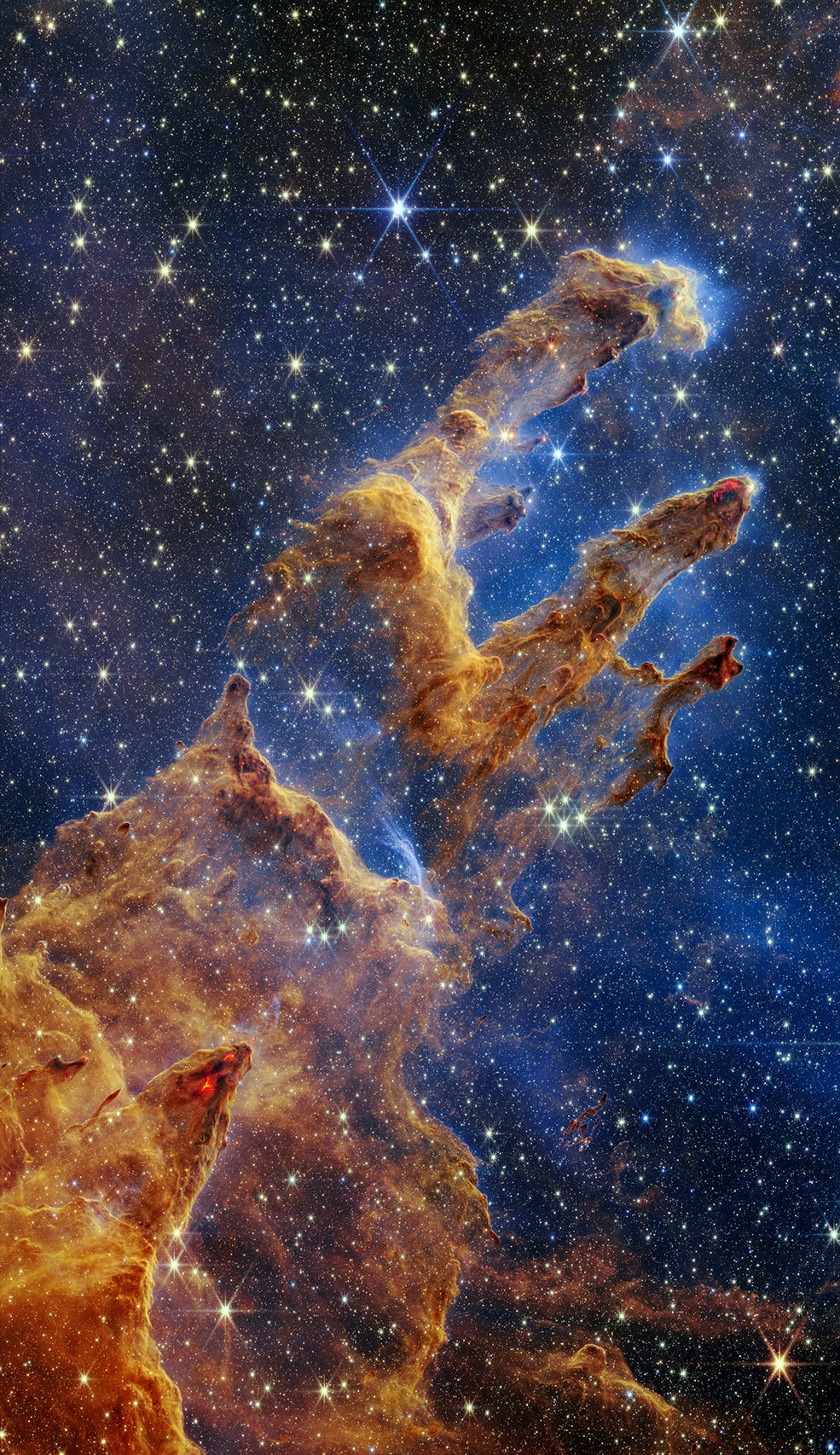Mind Candy: Webb Telescope's Brilliant "Pillars of Creation"
Hubble's 1995 Image Was Great. Webb's Is Absolutely Mind-Blowing.
NASA’s James Webb Space Telescope captured this detailed image of an extremely dense HR-II region where stars are born. The columns are made of cool interstellar gases and dust that looks almost transparent in the near-infrared light spectrum. Here, assembled by gravity, “knots” form and then begin to collapse in on themselves, becoming denser and denser. As they coalesce, they slowly heat up until they ignite. And voila! A new star.
NASA writes:
What about those wavy lines that look like lava at the edges of some pillars? These are ejections from stars that are still forming within the gas and dust. Young stars periodically shoot out supersonic jets that collide with clouds of material, like these thick pillars. This sometimes also results in bow shocks, which can form wavy patterns like a boat does as it moves through water. The crimson glow comes from the energetic hydrogen molecules that result from jets and shocks. This is evident in the second and third pillars from the top—the NIRCam image is practically pulsing with their activity. These young stars are estimated to be only a few hundred thousand years old.
Although it may seem as if the near-infrared light has allowed Webb to “see through” the dust clouds and out into open space, this is, relatively speaking, a near-view. There are virtually no galaxies in this image because to see the Pillars of Creation, we need to look laterally down the dust lane of our Milky Way galaxy from earth’s position within it. If we wanted to see other galaxies, we’d need to look vertically up through the thinner part of the dust lane into deep space.


